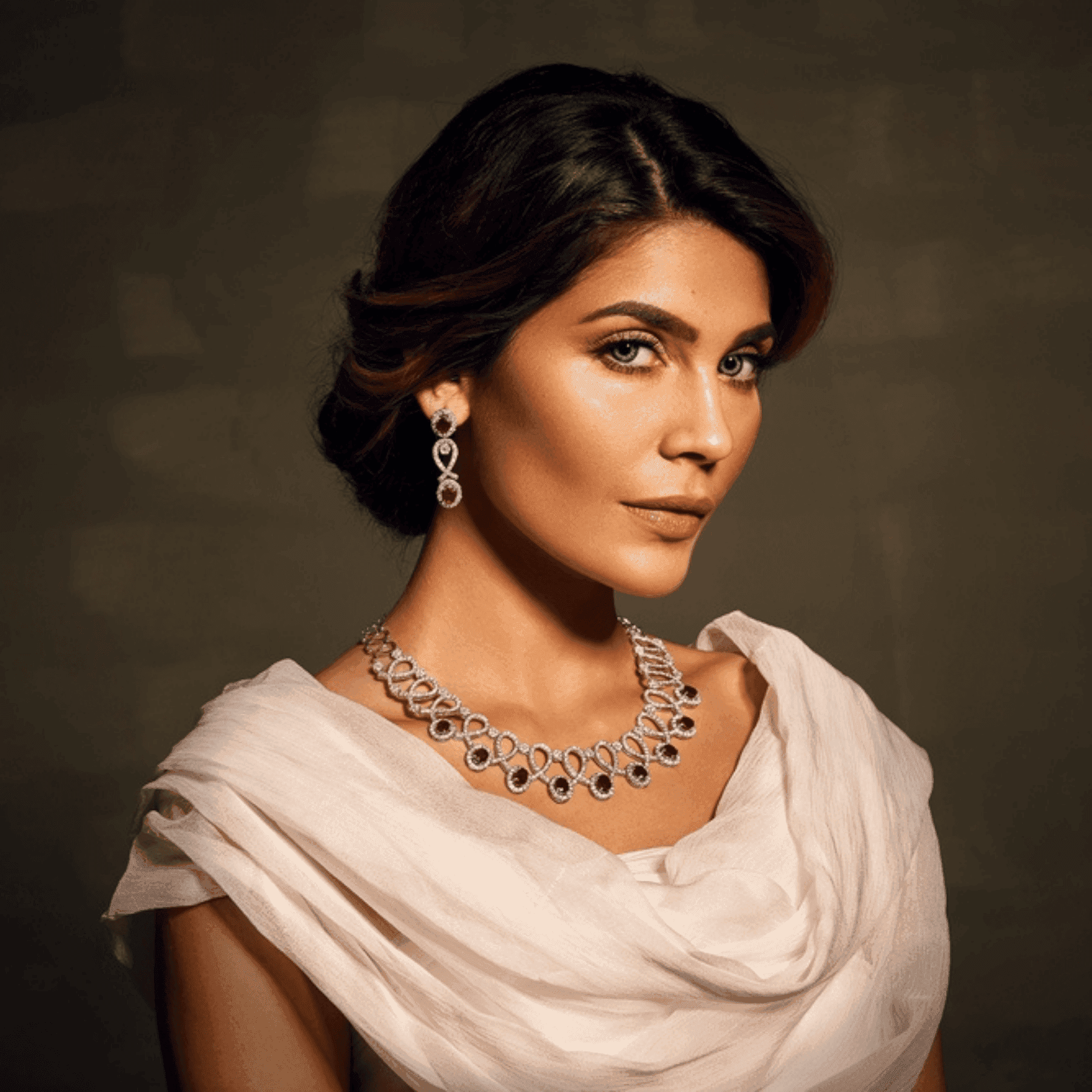
Luxury Edit
•05 min read

Silk and satin are two fabrics that have long been associated with luxury fashion. In this blog post, we explore the unique qualities and differences between these extravagant materials. Readers will discover what sets premium silk fabrics apart from satin’s glossy finish and learn how each fabric plays a distinct role in the world of high-end silk apparel and elegant silk designs. The insights provided here will help you decide which fabric best reflects your personal style.
Silk is steeped in history, with its story tracing back to ancient trade routes and a legacy of royal and cultural significance. Derived from natural fibers produced by silkworms, silk represents eco-conscious luxury that has defined the aesthetic of luxury silk clothing for centuries. This fabric is celebrated for its natural elegance and is a cornerstone of designer silk outfits and silk couture fashion, making it a beloved choice for those who value authenticity and sustainable practices.
In contrast, satin is known more as a weave than a fiber. Typically made from synthetic or blended materials, satin has gained popularity for its affordability and versatility in today’s fashion scene. While satin can mimic the sheen of silk, it offers a cost-effective option for creating luxury silk dresses and evening wear. This modern fabric is often chosen to provide a glamorous look without compromising on style, making it a favored choice in contemporary collections.
The organic fibers of silk give it an unmatched softness and smoothness that naturally exudes luxury. This inherent quality makes silk the fabric of choice for many high-end silk apparel pieces. The naturally cooling properties and hypoallergenic benefits enhance its appeal in designer silk outfits, ensuring comfort along with style. Whether you are choosing silk evening wear or exploring silk couture fashion, the organic texture of silk remains a fundamental reason for its timeless appeal.
Satin stands out with its distinct shiny surface that is achieved through its specialized weave structure rather than from the fibers themselves. This manufactured gloss provides a look that is both smooth and visually appealing, making satin a popular option for those seeking a glamorous finish in their luxury silk dresses. While satin might replicate the appearance of silk to an extent, it is its cost-effectiveness and ease of care that ensure it remains a staple in fashion trends, particularly in silk fashion trends across accessible luxury collections.
Even though silk requires delicate care, it offers remarkable strength and longevity when maintained properly. The investment in high-end silk apparel, such as exquisite designer silk outfits and silk luxury wear, truly pays off with each wear. Silk’s durability, combined with its unique feel and eco-conscious appeal, makes it an irreplaceable part of any curated collection. Careful maintenance—like gentle handwashing or professional cleaning—ensures that silk garments retain their luxury status for years to come.

Satin offers a blend of affordability and simplicity in care. It is an excellent alternative for those desiring a luxurious look without the extensive upkeep required by silk. Often featured in silk fashion trends and luxury silk dresses, satin’s durability makes it an attractive choice for everyday glamorous pieces. Its ease of care allows individuals to enjoy its elegant sheen without the worry of constant maintenance, providing a perfect balance between style and practicality.
Insight Corner: Did You Know?
Silk’s natural fibers are thermoregulating, meaning they keep you cool in summer and warm in winter, making it the ideal choice for year-round luxury wear.
Silk has long been the fabric of choice for couture and bespoke outfits. It graces the runways of elite fashion shows and is integral to silk evening wear and bridal gowns where every detail matters. This material’s refined texture and luxurious appeal solidify its reputation in the realm of elegant silk designs and silk couture fashion. The exclusivity attached to silk luxury wear underscores its status as a symbol of high-end luxury that reflects both tradition and modern sophistication.
Satin offers a contemporary alternative by enabling access to glamorous looks inspired by top-tier trends. Often used in creating pieces that mimic the opulence of luxury silk clothing, satin opens the door for experimentation in style without a hefty price tag. Its use in crafting silk fashion trends provides a bridge between traditional luxury and modern affordability, making it an attractive option for a wide range of fashion enthusiasts, particularly in silk evening wear that radiates a modern, glamorous flair.
Across the world, silk has been revered for its cultural and historical significance. From ancient imperial robes to modern haute couture, premium silk fabrics have consistently symbolized status and refined taste. This deep-rooted cultural heritage reinforces silk as not merely a fabric, but as an emblem of luxury and sophistication that transcends generations. Its use in designer silk outfits speaks volumes of its ability to connect tradition with contemporary fashion.
While satin may not have the ancient legacy of silk, it has carved its own niche in modern fashion narratives. Associated with Hollywood glam and red-carpet moments, satin brings a fresh perspective to luxury with its distinctive glossy appeal. This fabric often complements silk fashion trends by delivering accessible glamour that appeals to youthful fashion sensibilities without compromising on the allure of a high-end look.
For those seeking a blend of timeless elegance and eco-conscious luxury, silk stands out as the premier option. Its natural beauty, sustainable origins, and luxurious feel make it ideal for creating designer silk outfits and silk couture fashion that are both classic and impactful. Choosing silk means investing in a fabric that not only feels exceptional but also carries a rich legacy of cultural prestige.
-8704a161-e35d-4932-b982-017add6889b1.png&w=3840&q=75)
Satin is the go-to choice for fashion enthusiasts who value versatility and affordability while maintaining a high-glamour quotient. This fabric offers an accessible entry into the world of luxury by beautifully simulating the look of expensive materials in luxury silk dresses and other glamorous pieces. Its ease of care and cost-effectiveness make it a perfect complement to a diverse wardrobe where style and practicality coalesce.
Silk is derived from natural fibers, offering unmatched softness, sheen, and eco-conscious appeal. Its long-standing history in couture fashion only adds to its lavish status.
Satin is easier to care for and more affordable, but it does not match the long-term durability of silk's natural fibers.
Satin can mimic the glossy appearance of silk, though it lacks the natural texture and breathability that make silk uniquely comfortable.
Silk is generally preferred for high-end evening wear due to its inherent elegance, while satin offers an accessible glamour ideal for modern styles.
Silk requires gentle handwashing or professional dry cleaning to maintain its quality and longevity.
Both silk and satin hold a significant place in the luxury fashion landscape. Silk’s natural elegance and cultural significance make it the ultimate choice for timeless luxury, while satin excels in delivering affordable glamour with ease. Understanding these differences helps you tailor your wardrobe to express your unique sense of style. Whether leaning towards the eco-conscious charm of designer silk outfits or the versatile appeal of luxury silk dresses, your choice reflects your individuality and commitment to quality.